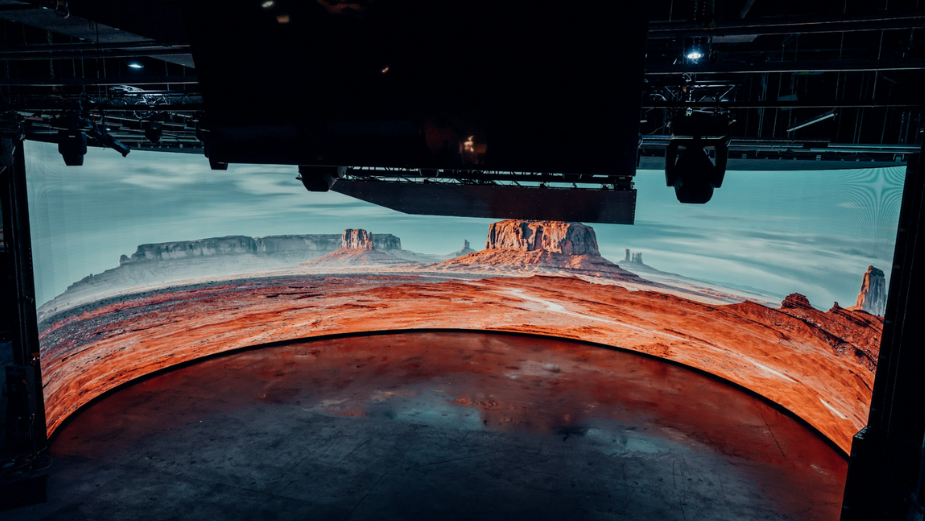
Unreal Engine 4 vs Unreal Engine 5: A Look into the New Capabilities of UE5

When Epic Games made Unreal Engine 5 available for game developers in April of 2022 it also provided new capabilities for virtual artists and filmmakers utilising Unreal Engine to design and build virtual environments. A helpful way to evaluate what is now available with UE5 is to compare it to the capabilities of UE4. And with the recent release of Unreal 5.1, there is a plethora of even newer features, tools, and even bug fixes that help benefit virtual production. We will touch base more on these specific features in 5.1 in the future but for now we are going to focus on the exciting features of UE5 and they differ from UE4.
Main Differences
When comparing Unreal Engine 4 and Unreal Engine 5 for filmmaking, there are quite a few differences. Both have a tremendous amount of potential, but UE5 expands on the creative ability of UE4 and creates a whole new experience to help storytellers create even more expansive and detailed projects.
Probably the most significant difference between UE4 and UE5 is the amount of polygons that can be used within the engine. Polygons are the shapes that build meshes inside of the game engine. While Unreal 4 was able to handle a few million polygons, Unreal 5 is able to handle up to 10 billion polygons. This allows you to create vast cityscapes and environments that were not possible before.
Another major difference between the two is the lighting system. In UE4 all lighting was artificial and had to be made to look realistic if that was your goal. Now with UE5 the built in lighting system called Lumen allows for real time realistic lighting just by adding the lights. This system calculates the maths that a real light ray would follow to give off the most real looking lighting possible.
Helpful New Features
Temporal Super Resolution is a new feature inside of UE5 that allows you to render high quality textures (4K, 8K etc) at only the demand of a 1080p texture. This allows us to have highly detailed materials inside of Unreal to give great detail to an object while not tolling the performance of the game engine as much.
The World Partition System is also a new tool inside of UE5. This allows you to select specific regions of your world that you want to have loaded in to save performance. If you have a huge city but only plan on using one block of the environment, you can section off what area you will use and tell it to only load said region.
UE5 also has added an enhanced 3D modelling toolset. This is way more advanced than the previous modelling toolset inside of UE4. With the new toolset you can create custom 3D models all inside of Unreal Engine without having to use a 3D modelling software. While a true 3D software will still give you more ability to customise, the new toolset has tons of new features such as booleans which gives the artist a lot more freedom while inside of Unreal.
Added Benefits
When it comes to Virtual Production, all of these new features give us added benefits. Nanite allows us to have more intricate environments that can run at our desired frame rate. Before with UE4, we were limited on performance of the engine which limited our capabilities while using nDisplay on the volume.
Now with Nanite we have a lot more flexibility to build to our desired goal for our environments. With Lumen we now need to do half the work as before for lighting. It does all the calculations of how real world lighting would affect our scene and creates an easier approach to reach the goal we have for our virtual lighting.
The world partition system is great for VP because it allows us to create a vast and elaborate world, while only loading the areas we need during each shot. This is great because we can create a world that is seamless and can be used in post for composites while lowering the toll of the environment on the systems when using it for VP. We can load a few sections for one shot, unload them, and load completely new sections for another shot all within a few minutes.
With the 3D modelling toolkit, you have many new options for editing geometry. This is great on set as there might be a building or something and say they want to change the design of the model on the fly. These tools allow us to make changes that previously required us to export to a 3D modelling software. The best part is that it’s all real-time on a massive LED volume.
UE5 + Vū
For the past six months, Vū has been building virtual environments using Unreal Engine 5 which has expanded what’s possible when it comes to the benefits of virtual production for our clients. From enhanced lighting to improved texture rendering and 3D modelling, UE5 provides for more photo-realistic environments for filmmakers to shoot in and added efficiencies in pre-production.












